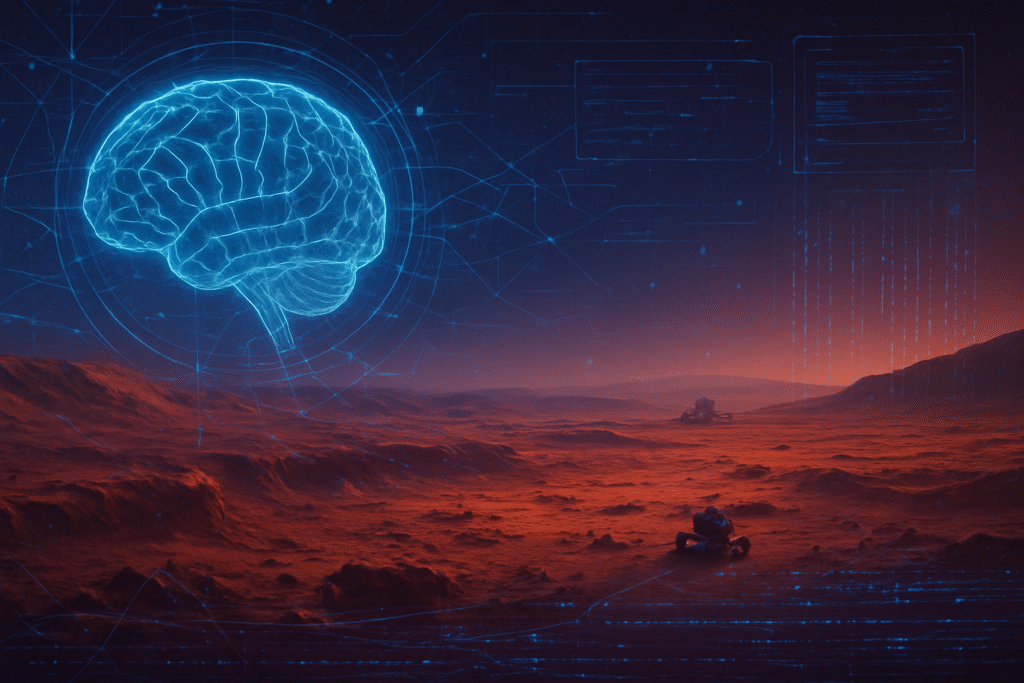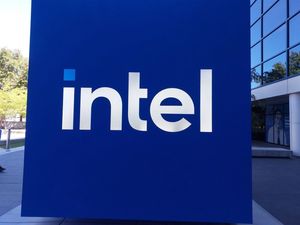
Stony Brook University's groundbreaking AI system, 'Martian World Models,' is poised to transform how humanity prepares for and understands the Red Planet. By generating hyper-realistic, three-dimensional videos of the Martian surface with unprecedented physical accuracy, this technological leap promises to reshape mission simulation, scientific discovery, and public engagement with space exploration.
Announced around October 28, 2025, this innovative AI development directly addresses a long-standing challenge in planetary science: the scarcity and 'messiness' of high-quality Martian data. Unlike most AI models trained on Earth-based imagery, the Stony Brook system is meticulously designed to interpret Mars' distinct lighting, textures, and geometry. This breakthrough provides space agencies with an unparalleled tool for simulating exploration scenarios and preparing astronauts and robotic missions for the challenging Martian environment, potentially leading to more effective mission planning and reduced risks.
Unpacking the Martian World Models: A Deep Dive into AI's New Frontier
The 'Martian World Models' system, spearheaded by Assistant Professor Chenyu You from Stony Brook University's Department of Applied Mathematics & Statistics and Department of Computer Science, is a sophisticated two-component architecture designed for meticulous Martian environment generation.
At its core is M3arsSynth (Multimodal Mars Synthesis), a specialized data engine and curation pipeline. This engine meticulously reconstructs physically accurate 3D models of Martian terrain by processing pairs of stereo navigation images from NASA's Planetary Data System (PDS). By calculating precise depth and scale from these authentic rover photographs, M3arsSynth constructs detailed digital landscapes that faithfully mirror the Red Planet's actual structure. A crucial aspect of M3arsSynth's development involved extensive human oversight, with the team manually cleaning and verifying each dataset, removing blurred or redundant frames, and cross-checking geometry with planetary scientists. This human-in-the-loop validation was essential due to the inherent challenges of Mars data, including harsh lighting, repeating textures, and noisy rover images.
Building upon M3arsSynth's high-fidelity reconstructions is MarsGen, an advanced AI model specifically trained on this curated Martian data. MarsGen is capable of synthesizing new, controllable videos of Mars from various inputs, including single image frames, text prompts, or predefined camera paths. The output consists of smooth, consistent video sequences that capture not only the visual appearance but also the crucial depth and physical realism of Martian landscapes. Chenyu You emphasized that the goal extends beyond mere visual representation, aiming to "recreate a living Martian world on Earth — an environment that thinks, breathes, and behaves like the real thing."
This approach fundamentally differs from previous AI-driven planetary modeling methods. By specifically addressing the "domain gap" that arises when AI models trained on Earth imagery attempt to interpret Mars, Stony Brook's system achieves a level of physical accuracy and geometric consistency previously unattainable. Experimental results indicate that this tailored approach significantly outperforms video synthesis models trained on terrestrial datasets in terms of both visual fidelity and 3D structural consistency. The ability to generate controllable videos also offers greater flexibility for mission planning and scientific analysis in novel environments, marking a significant departure from static models or less accurate visual simulations. Initial reactions from the AI research community, as evidenced by the research's publication on arXiv in July 2025, suggest considerable interest and positive reception for this specialized, physically informed generative AI.
Reshaping the AI Industry: A New Horizon for Tech Giants and Startups
Stony Brook University's breakthrough in generating physically accurate Martian surface videos is set to create ripples across the AI and technology industries, influencing tech giants, specialized AI companies, and burgeoning startups alike. This development establishes a new benchmark for environmental simulation, particularly for non-terrestrial environments, pushing the boundaries of what is possible in digital twin technology.
Tech giants with significant investments in AI, cloud computing, and digital twin initiatives stand to benefit immensely. Companies like Google (NASDAQ: GOOGL), with its extensive cloud infrastructure and AI research arms, could see increased demand for high-performance computing necessary for rendering such complex simulations. Similarly, Microsoft (NASDAQ: MSFT), a major player in cloud services and mixed reality, could integrate these advancements into its simulation platforms and digital twin projects, extending their applicability to extraterrestrial environments. NVIDIA (NASDAQ: NVDA), a leader in GPU technology and AI-driven simulation, is particularly well-positioned, as its Omniverse platform and AI physics engines are already accelerating engineering design with digital twin technologies. The 'Martian World Models' align perfectly with the broader trend of creating highly accurate digital twins of physical environments, offering critical advancements for extending these capabilities to space.
For specialized AI companies, particularly those focused on 3D reconstruction, generative AI, and scientific visualization, Stony Brook's methodology provides a robust framework and a new high standard for physically accurate synthetic data generation. Companies developing AI for robotic navigation, autonomous systems, and advanced simulation in extreme environments could directly leverage or license these techniques to improve the robustness of AI agents designed for space exploration. The ability to create "a living Martian world on Earth" means that AI training environments can become far more realistic and reliable.
Emerging startups also have significant opportunities. Those specializing in niche simulation tools could build upon or license aspects of Stony Brook's technology to create highly specialized applications for planetary science research, resource prospecting, or astrobiology. Furthermore, startups developing immersive virtual reality (VR) or augmented reality (AR) experiences for space tourism, educational programs, or advanced astronaut training simulators could find hyper-realistic Martian videos to be a game-changer. The burgeoning market for synthetic data generation, especially for challenging real-world scenarios, could also see new players offering physically accurate extraterrestrial datasets. This development will foster a shift in R&D focus within companies, emphasizing the need for specialized datasets and physically informed AI models rather than solely relying on general-purpose AI or terrestrial data, thereby accelerating the space economy.
A Wider Lens: AI's Evolving Role in Scientific Discovery and Ethical Frontiers
The development of physically accurate AI models for Mars by Stony Brook University is not an isolated event but a significant stride within the broader AI landscape, reflecting and influencing several key trends while also highlighting potential concerns.
This breakthrough firmly places generative AI at the forefront of scientific modeling. While generative AI has traditionally focused on visual fidelity, Stony Brook's work emphasizes physical accuracy, aligning with a growing trend where AI is used for simulating molecular interactions, hypothesizing climate models, and optimizing materials. This aligns with the push for 'digital twins' that integrate physics-based modeling with AI, mirroring approaches seen in industrial applications. The project also underscores the increasing importance of synthetic data generation, especially in data-scarce fields like planetary science, where high-fidelity synthetic environments can augment limited real-world data for AI training. Furthermore, it contributes to the rapid acceleration of multimodal AI, which is now seamlessly processing and generating information from various data types—text, images, audio, video, and sensor data—crucial for interpreting diverse rover data and generating comprehensive Martian environments.
The impacts of this technology are profound. It promises to enhance space exploration and mission planning by providing unprecedented simulation capabilities, allowing for extensive testing of navigation systems and terrain analysis before physical missions. It will also improve rover operations and scientific discovery, with AI assisting in identifying Martian weather patterns, analyzing terrain features, and even analyzing soil and rock samples. These models serve as virtual laboratories for training and validating AI systems for future robotic missions and significantly enhance public engagement and scientific communication by transforming raw data into compelling visual narratives.
However, with such powerful AI comes significant responsibilities and potential concerns. The risk of misinformation and "hallucinations" in generative AI remains, where models can produce false or misleading content that sounds authoritative, a critical concern in scientific research. Bias in AI outputs, stemming from training data, could also lead to inaccurate representations of geological features. The fundamental challenge of data quality and scarcity for Mars data, despite Stony Brook's extensive cleaning efforts, persists. Moreover, the lack of explainability and transparency in complex AI models raises questions about trust and accountability, particularly for mission-critical systems. Ethical considerations surrounding AI's autonomy in mission planning, potential misuse of AI-generated content, and ensuring safe and transparent systems are paramount.
This development builds upon and contributes to several recent AI milestones. It leverages advancements in generative visual AI, exemplified by models like OpenAI's Sora 2 (private) and Google's Veo 3, which now produce high-quality, physically coherent video. It further solidifies AI's role as a scientific discovery engine, moving beyond basic tasks to drive breakthroughs in drug discovery, materials science, and physics simulations, akin to DeepMind's (owned by Google (NASDAQ: GOOGL)) AlphaFold. While NASA has safely used AI for decades, from Apollo orbiter software to autonomous Mars rovers like Perseverance, Stony Brook's work represents a significant leap by creating truly physically accurate and dynamic visual models, pushing beyond static reconstructions or basic autonomous functions.
The Martian Horizon: Future Developments and Expert Predictions
The 'Martian World Models' project at Stony Brook University is not merely a static achievement but a dynamic foundation for future advancements in AI-driven planetary exploration. Researchers are already charting a course for near-term and long-term developments that promise to make virtual Mars even more interactive and intelligent.
In the near-term, Stony Brook's team is focused on enhancing the system's ability to model environmental dynamics. This includes simulating the intricate movement of dust, variations in light, and improving the AI's comprehension of diverse terrain features. The aspiration is to develop systems that can "sense and evolve with the environment, not just render it," moving towards more interactive and dynamic simulations. The university's strategic investments in AI research, through initiatives like the AI Innovation Institute (AI3) and the Empire AI Consortium, aim to provide the necessary computational power and foster collaborative AI projects to accelerate these developments.
Long-term, this research points towards a transformative future where planetary exploration can commence virtually long before physical missions launch. Expert predictions for AI in space exploration envision a future with autonomous mission management, where AI orchestrates complex satellite networks and multi-orbit constellations in real-time. The advent of "agentic AI," capable of autonomous decision-making and actions, is considered a long-term game-changer, although its adoption will likely be incremental and cautious. There's a strong belief that AI-powered humanoid robots, potentially termed "artificial super astronauts," could be deployed to Mars on uncrewed Starship missions by SpaceX (private), possibly as early as 2026, to explore before human arrival. NASA is broadly leveraging generative AI and "super agents" to achieve a Mars presence by 2040, including the development of a comprehensive "Martian digital twin" for rapid testing and simulation.
The potential applications and use cases for these physically accurate Martian videos are vast. Space agencies can conduct extensive mission planning and rehearsal, testing navigation systems and analyzing terrain in virtual environments, leading to more robust mission designs and enhanced crew safety. The models provide realistic environments for training and testing autonomous robots destined for Mars, refining their navigation and operational protocols. Scientists can use these highly detailed models for advanced research and data visualization, gaining a deeper understanding of Martian geology and potential habitability. Beyond scientific applications, the immersive and realistic videos can revolutionize educational content and public outreach, making complex scientific data accessible and captivating, and even fuel immersive entertainment and storytelling for movies, documentaries, and virtual reality experiences set on Mars.
Despite these promising prospects, several challenges persist. The fundamental hurdle remains the scarcity and 'messiness' of high-quality Martian data, necessitating extensive and often manual cleaning and alignment. Bridging the "domain gap" between Earth-trained AI and Mars' unique characteristics is crucial. The immense computational resources required for generating complex 3D models and videos also pose a challenge, though initiatives like Empire AI aim to address this. Accurately modeling dynamic Martian environmental elements like dust storms and wind patterns, and ensuring consistency in elements across extended AI-generated video sequences, are ongoing technical hurdles. Furthermore, ethical considerations surrounding AI autonomy in mission planning and decision-making will become increasingly prominent.
Experts predict that AI will fundamentally transform how humanity approaches Mars. Chenyu You envisions AI systems for Mars modeling that "sense and evolve with the environment," offering dynamic and adaptive simulations. Former NASA Science Director Dr. Thomas Zurbuchen stated that "we're entering an era where AI can assist in ways we never imagined," noting that AI tools are already revolutionizing Mars data analysis. The rapid improvement and democratization of AI video generation tools mean that high-quality visual content about Mars can be created with significantly reduced costs and time, broadening the impact of Martian research beyond scientific communities to public education and engagement.
A New Era of Martian Exploration: The Road Ahead
The development of the 'Martian World Models' by Stony Brook University researchers marks a pivotal moment in the convergence of artificial intelligence and space exploration. This system, capable of generating physically accurate, three-dimensional videos of the Martian surface, represents a monumental leap in our ability to simulate, study, and prepare for humanity's journey to the Red Planet.
The key takeaways are clear: Stony Brook has pioneered a domain-specific generative AI approach that prioritizes scientific accuracy and physical consistency over mere visual fidelity. By tackling the challenge of 'messy' Martian data through meticulous human oversight and specialized data engines, they've demonstrated how AI can thrive even in data-constrained scientific fields. This work signifies a powerful synergy between advanced AI techniques and planetary science, establishing AI not just as an analytical tool but as a creative engine for scientific exploration.
This development's significance in AI history lies in its precedent for developing AI that can generate scientifically valid and physically consistent simulations across various domains. It pushes the boundaries of AI's role in scientific modeling, establishing it as a tool for generating complex, physically constrained realities. This achievement stands alongside other transformative AI milestones like AlphaFold in protein folding, demonstrating AI's profound impact on accelerating scientific discovery.
The long-term impact is nothing short of revolutionary. This technology could fundamentally change how space agencies plan and rehearse missions, creating incredibly realistic training environments for astronauts and robotic systems. It promises to accelerate scientific research, leading to a deeper understanding of Martian geology, climate, and potential habitability. Furthermore, it holds immense potential for enhancing public engagement with space exploration, making the Red Planet more accessible and understandable than ever before. This methodology could also serve as a template for creating physically accurate models of other celestial bodies, expanding our virtual exploration capabilities across the solar system.
In the coming weeks and months, watch for further detailed scientific publications from Stony Brook University outlining the technical specifics of M3arsSynth and MarsGen. Keep an eye out for announcements of collaborations with major space agencies like NASA or ESA, or with aerospace companies, as integration into existing simulation platforms would be a strong indicator of practical adoption. Demonstrations at prominent AI or planetary science conferences will showcase the system's capabilities, potentially attracting further interest and investment. Researchers are expected to expand capabilities, incorporating more dynamic elements such as Martian weather patterns and simulating geological processes over longer timescales. The reception from the broader scientific community and the public, along with early use cases, will be crucial in shaping the immediate trajectory of this groundbreaking project. The 'Martian World Models' project is not just building a virtual Mars; it's laying the groundwork for a new era of physically intelligent AI that will redefine our understanding and exploration of the cosmos.
This content is intended for informational purposes only and represents analysis of current AI developments.
TokenRing AI delivers enterprise-grade solutions for multi-agent AI workflow orchestration, AI-powered development tools, and seamless remote collaboration platforms.
For more information, visit https://www.tokenring.ai/.






